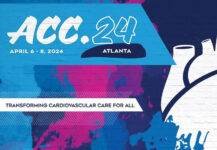Chronic total occlusion (CTO) affect up to 20% of patients undergoing angiographic diagnostic tests. During the last two decades, recanalization technique refinement, the development of specific devices and operator skill improvement have elevated procedural success rate up to 90%. However, there are still particular complications such as collateral perforation and access site complications. This is…
Carotid Endarterectomy vs. Carotid Angioplasty in Symptomatic and Asymptomatic Patients: 30-Day Outcomes
Extracranial carotid artery disease represents 15 to 20% of all strokes. Carotid revascularization plays a role in primary and secondary prevention of cerebrovascular events. Outcomes of two common revascularization strategies, Carotid endarterectomy (CAE) and carotid artery stenting (CAS), have been studied and compared. In recent years, complications associated to CAS have dropped thanks to technical…
EXCEL Study: Complete vs. Incomplete Revascularization
Regardless of whether it is attempted through percutaneous coronary intervention (PCI) or myocardial revascularization surgery (MRS), complete revascularization (CR) is not always achieved. Overall, it is more frequent with surgery than with percutaneous treatment. Additionally, incomplete revascularization (IR) has proven to be associated with worse outcomes compared to CR. Researchers conducted an analysis of the…
Drug-Coated Balloon Angioplasty in Femoropopliteal CTOs: Intraluminal or Subintimal?
Patients with peripheral vascular disease often experience femoropopliteal compromise. It is estimated that approximately 50% of lesions in this area are chronic total occlusions (CTO). Even though success rate has improved for peripheral CTO treatments, long term clinical and technical outcomes have not been fully determined yet. Prior research has looked into stenting outcomes in…
SMART Trial: What is the Best Valve for Small Annuli?
Transcatheter aortic valve intervention (TAVI) has been shown beneficial over the years. However, a significant subgroup of patients with small aortic annulus, which make approximately one third of cases and have a higher incidence in women, face additional challenge, such as higher incidence of mismatch, reduced exercise capacity and shorter durability. Self-expanding and balloon expandable…
Peripheral Vascular Disease: Our Reality in Latin America, with the LATAM SOLACI Peripheral Registry
On the one hand, chronic peripheral vascular disease is on the rise. On the other, over the past 20 years, percutaneous coronary intervention (PCI) has gained considerable ground thanks to various new devices, replacing surgery as an alternative in most scenarios. Both strategies have shown similar results, but PCI has fewer complications and shorter hospital stays.…
ACC 2024 | ORBITA-COSMIC
Coronary sinus reduction (CSR) is a relevant area of study for the treatment of refractory angina, with hopes of improving myocardial perfusion. However, to date, there are no conclusive data. The ORBITA-COSMIC study is a randomized, double-blind, placebo-controlled trial conducted at six centers in the UK. Researchers recruited patients with angina and chronic ischemia who…
ACC 2024 | IVUS-DCB
Drug-coated balloons (DCB) have proven to be effective in the treatment of femoropopliteal pathology, although they entail complications such as recoil, residual stenosis, and dissection. Their outcomes could be improved through proper and enhanced vessel preparation, both before and after the procedure. Intravascular ultrasound (IVUS) offers the advantage of characterizing plaque and assessing vessel diameter.…
ACC 2024 | REDUCE AMI: Beta-Blockers after Myocardial Infarction and Preserved Ejection Fraction
Most clinical trials have shown benefits of beta blockers after acute myocardial infraction, including patients with extensive AMI, and these were carried out in the era before AMI was diagnosed with biomarkers and prior to treatment with coronary angioplasty, use of antithrombotic agents and high intensity statins, and angiotensin-aldosterone system inhibitors. The aim of this…
ACC 2024 | SMART Trial: Self-Expanding or Balloon-Expandable TAVR in Patients with Small Aortic Annulus
Patients with severe aortic stenosis and a small aortic annulus face an increased risk of deteriorated valvular hemodynamic performance and adverse cardiovascular clinical outcomes after undergoing transcatheter aortic valve replacement (TAVR). This study, a prospective multicenter randomized trial, aimed to compare the efficacy and safety of two types of valves: the supra-annular self-expanding EVOLUT (SEV)…






